Tiel Seivl-Keevers
To be fortunate enough to view, and perhaps someday even own a beautiful work of art is truly one of life’s great pleasures. We travel the world visiting vast galleries and ancient museums searching for memorable artworks by incredible artists. However, it’s not only the works themselves that speak to us, but the story of the artist that captures our imagination. The life of an artist is one fueled by imagination, curiosity and determination. It is a life spent being constantly inspired by the colours, shapes, patterns and textures of the environment – relentlessly absorbing and exploring as their art demands.
One of my favourite contemporary artists Tiel Seivl-Keevers uses the natural Australian landscape as an instrument for her imagination, letting the colours and the environment guide her brush. I recently chatted to Tiel about her path to becoming a full time artist and why travelling to new environments is so important in the development of her work.
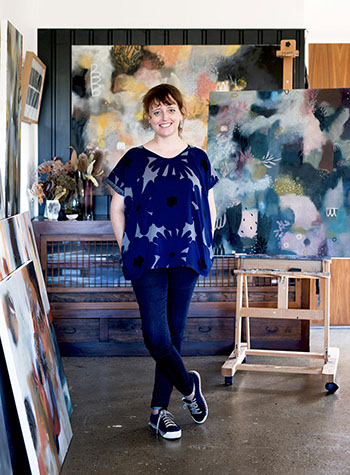
Photo by Mindi Cooke
Can you share a little about your creative background, have you always been an artist?
I guess that depends on how you define the term Artist. I’ve always been creatively minded from a young age and I don’t think there are too many artists out there who weren’t born with some sense of wanting to express and make. I studied printmaking when I left school then started working in the graphic design industry before becoming a teacher in design, illustration and visual arts at TAFEs and Universities around Australia. It was only recently that I thought I’d give this ‘being an artist’ gig a real go.
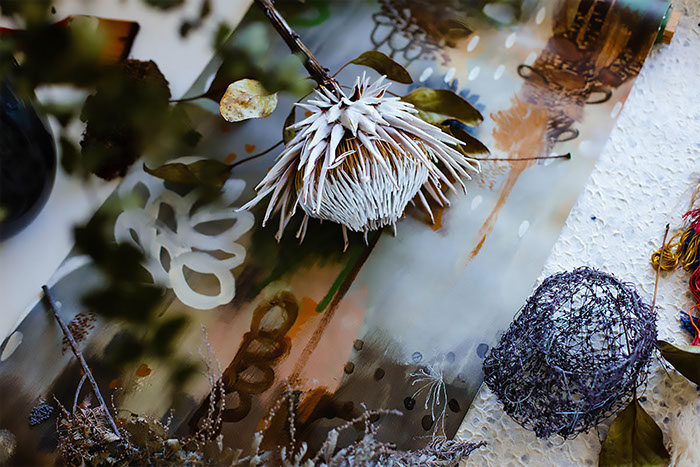
Your art crosses over into a variety of disciplines and practices. How would you describe your work?
I love exploring with different media and techniques. Although I have used computers in my work over the years, I am a big believer in getting my hands dirty and being tactile. I once taught animation in design and was constantly encouraging my students to draw or sketch before sitting at a computer screen. So even though there can be a graphical sense in my work sometimes, I strongly believe in trying new techniques that involve my hands as a tool.
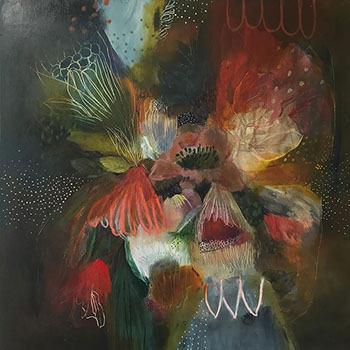
How has your work evolved over time and can you explain how your style has changed over the years?
Because I am a self taught painter, I have developed a style that perhaps has more of a printing and graphical sensibility. However, the technical aspects of painting have certainly shaped my style in recent years. I also see how my approach to mark making and my skills of physically working with paint have dictated my ability to produce something that I am resolved with. Painting challenges me to be more free and expressive with my marks.
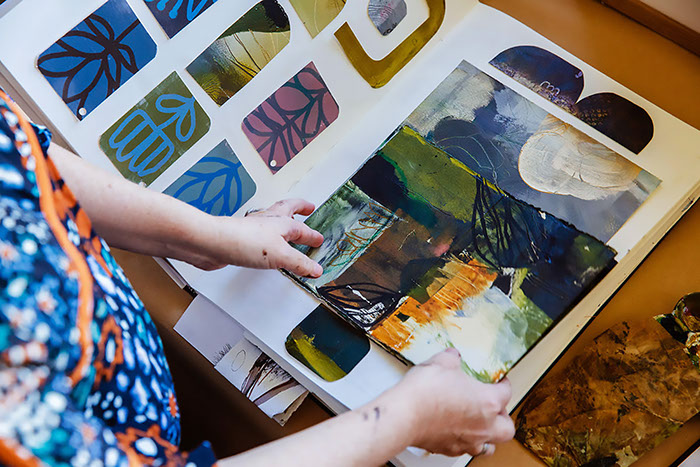
Photo by Anjanette Hudson of Capture Studio
As well as painting you also explore mixed media in your work such as embroidery, paper and fabric. Has this been a natural progression for you?
For sure. Surface decoration and design have always appealed to me as well as how craft techniques such as embroidery can be incorporated into the Fine Arts. I love the challenge of manipulating paper and fabric and often use techniques such as sewing and carving to develop the concepts of mending and permanency that I regularly explore in my work. I sometimes use existing drawings or marks I have from previous investigations to create something new. Like traditional quilting, I enjoy the challenge of working with many components, exploring composition and colour to create something new out of something old. I also yearn for the slowness of making. Incorporating slow techniques is just part of balancing out all the fast paced parts of my life.
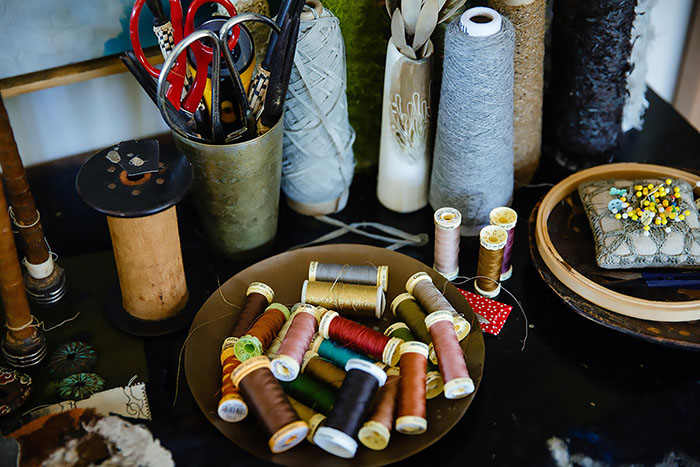
Photo by Anjanette Hudson of Capture Studio
Your work is a celebration of the Australian landscape. Was it the landscape that first inspired you to paint or was it painting that drew your eye more closely to the natural environment?
The Australian Landscape has so much to offer. It is definitely the driving force of my work. I never thought painting would be a big part of my art practice, but the ability to spread colour onto a surface, rub it off, scratch into it and repaint over a layer to create transparency and atmosphere is certainly a wonderful method of capturing all the elements of the landscape.
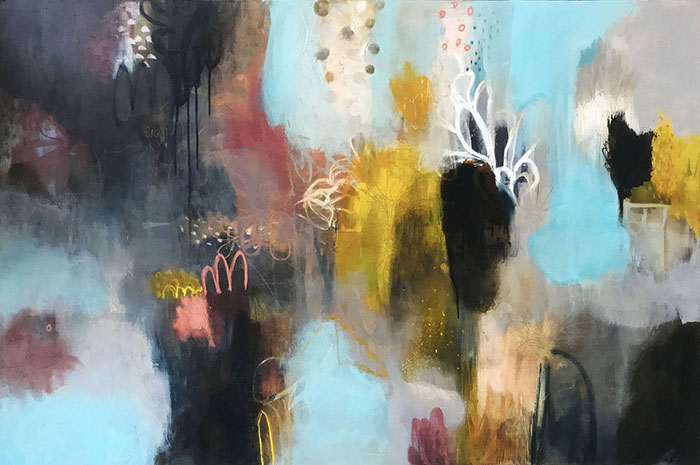
Does each new body of work revolve around a central theme or would you say each new piece is simply an ongoing evolution of the last?
I think nature will always be a central protagonist of my work, but I often tie in other themes with this and that in a sense makes it an ongoing evolution. I couldn’t possibly have the restraint to make one thing the constant hero. For example, I am fascinated with memory at the moment. Memories of childhood and how memory can be distorted as we grow older. Even watching my parents age and their loss of memory and how this can be expressed visually becomes another link in my art journey. So I’lI take these concepts and stitch them with previous themes. I see it as a tapestry that doesn’t necessarily have an ending.
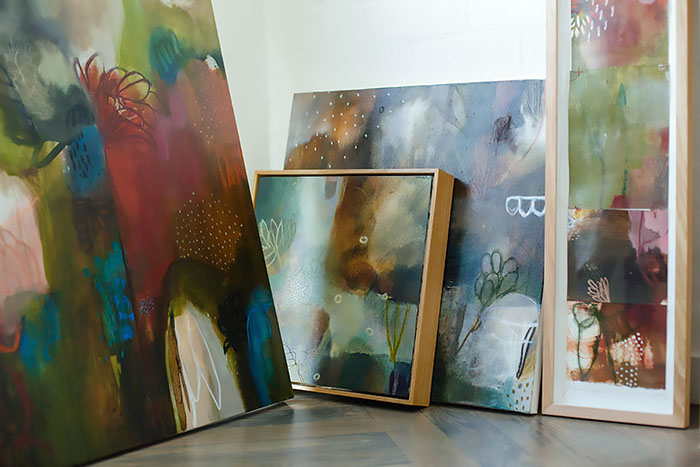
As an artist where do you find new sources of inspiration to keep your work moving forward?
Because nature is such a strong component in my work, I don’t have to struggle too much to find inspiration. New surroundings really spark my creativity, but to be honest I am often inspired by my local area and my garden. The constant cycles of life and death, how humans interact with nature and how nature itself can impact on our wellbeing always push my self-expression.
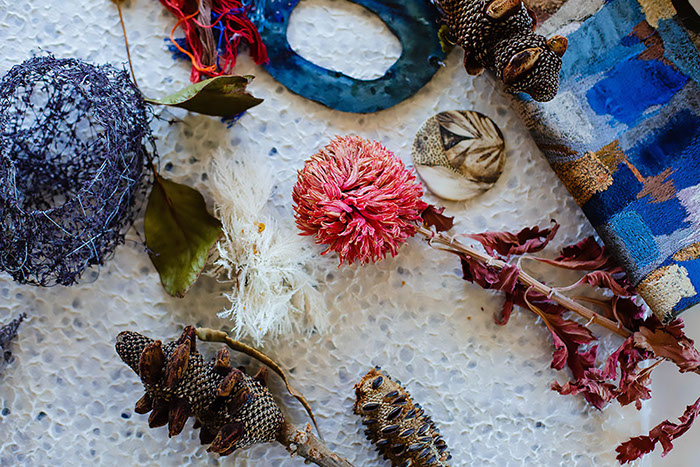
Photo by Anjanette Hudson of Capture Studio
I have noticed elements of Japan in your work. How does the experiences of travel inspire your artwork when you come home?
Yes, I have always had an interest in Asian culture and history, particularly that of Japan. A country with such a complex culture that is forever offering layers of visual and intellectual stimulation. When I travel to any foreign place, I am captivated by the people, the day to day rhythm of their lives, the colours and atmosphere of the natural surroundings. There are a few countries that sing to me in this way and Japan is definitely one that has stolen a piece of my heart. It has such a rich and interesting culture and the people’s approach to the value of the aesthetic in the everyday can be often breath taking. Everything is carefully thought about with reason, I particularly love how they embrace the seasons, not only within their food but in traditional art making. There is a real sense of celebration and honour they have held onto for centuries, and I find it incredibly fascinating. This of course is changing with the influence of western culture, but for me learning about their history and thinking is at times influential to my work.
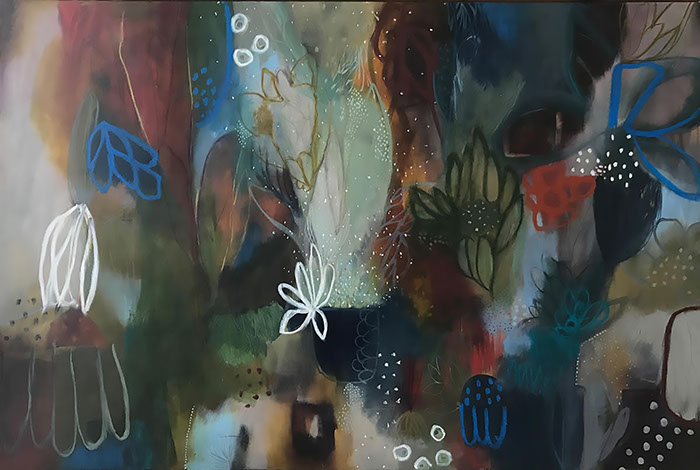
As a creative it can often be difficult to find time to attend to the business side of your work. Has this been a struggle for you?
For sure! I don’t have a competitive nature and at times this has been to my detriment. I am a plodder and happy to be one most of the time. I have an amazing husband who is very business minded and he offers great advice….even though I don’t always take it on. I have one foot in the commercial side of art, and one foot in the romantic notions of making art for the sake of making art.
Over the years, I have learnt to be serious about selling my work and putting a value on it as a product. It’s not cheap to make art if you are using quality paints, surfaces and framers. So often artists devalue their work, sometimes even give their time or the final product away for next to nothing. This is often why they give up. If this attitude doesn’t change, then the value of art in our culture won’t change. I’m often amazed to see paintings sell with such a low price. By the time an artist covers their costs of making, shipping and selling on consignment, they are left with very little. I’ve never met an artist who doesn’t get a sense of happiness out of seeing money in their bank account from something they have made, but I have met plenty who don’t seem to want to stand up for making a more justifiable income. And I know plenty of people who when they buy an original artwork directly from the artist, will treasure it forever.
We live in a world where art can be produced quickly and cheaply and this can sadly become the benchmark for many people. Competing with this on a business level is tough at times.
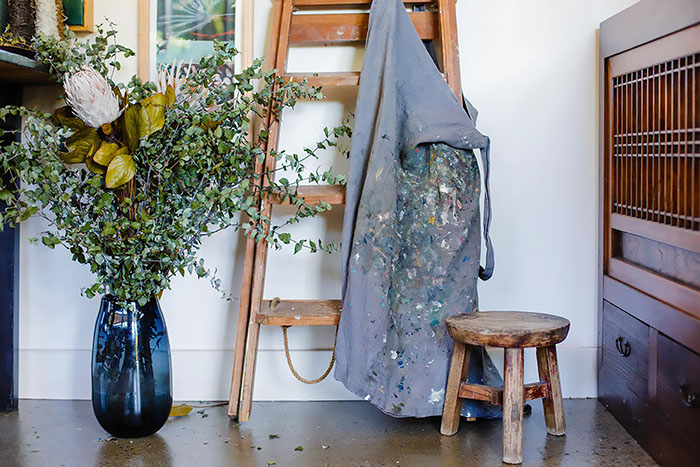
Photo by Anjanette Hudson of Capture Studio
What would be your best and your worst moments in your artistic career so far?
My best moments are being valued as the artist I want to be. The worst moments are possibly my inability to back myself.
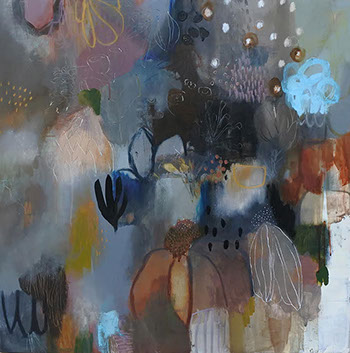
What is the hardest thing about being an artist for you?
Disruptions. The mother thing I guess. Not being able to switch that part of my brain off and put all my energy into my art practice. I find it really difficult to step away from being a mum to being someone who wants to develop and grow into a serious artist and express all my ideas with conviction and passion.
For me, I need to isolate my mind from the day to day needs of my family if I really want to be an artist. Some people are better at that than others, but I find it really challenging. Even now as I write this, I am discussing bus money and teeth cleaning with my teenage boy before he goes to his part time job.
There are times where I have this really deep level of being in the creative zone. I can spend hours and hours, day after day in my studio and not think about other aspects of my life. It can be a very indulgent working life, but it makes me feel empowered and free spirited. I am at my happiest when I create. However, it is often short lived and the feelings of guilt and selfishness creep in or I am needed elsewhere.
The reality is, my working hours are dictated by who in my household is doing what that day. And every day is different. Creatively this is a killer! I can’t just say, ‘Oh I have between 11am and 4pm today to paint and tomorrow I have between 9am and 2pm’ because fitting my creative brain into a weekly timetable is not the same as turning on my computer and crunching data. My left and right sides of my brain are in constant battle with each other. One minute I am the ‘just create and think like an artist’ and the next I am saying ‘Why am I doing this?’ ‘When will I ever be able to find the time to develop more seriously?’ And even sometimes, ‘What makes my work so important?’
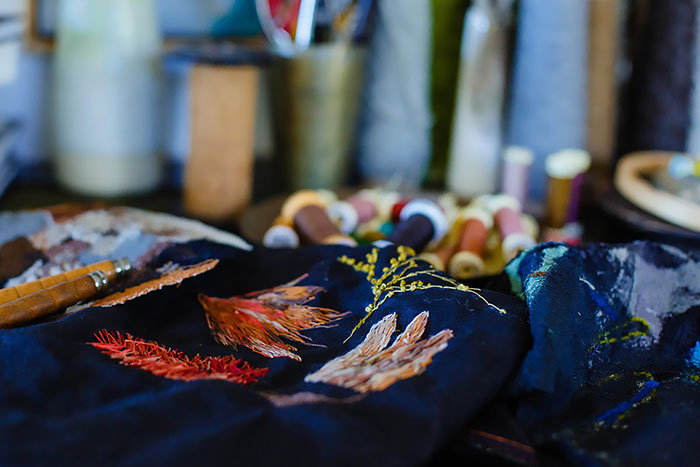
Photo by Anjanette Hudson of Capture Studio
Do you have any daily rituals that help to keep you inspired?
There are certain things I do, but not necessarily do all the time in order to keep me inspired. Scent can help trigger my ability focus…. burning incense, or essential oils. Having at least one clean working space is important. If I have been away from my studio for a while, I often like to just collect leaves, pods and flowers from my garden. If time is poor, I utilise my surroundings instead of going somewhere. I then photograph or sketch what I have brought in to stimulate working processes.
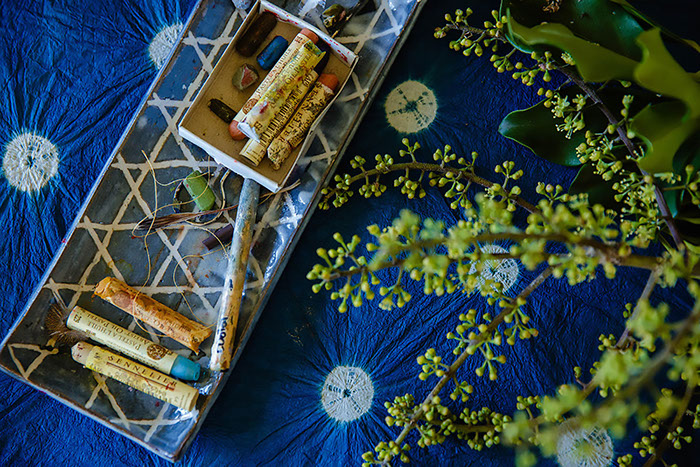
Photo by Anjanette Hudson of Capture Studio
You can find out more about Tiel and visit her beautiful new website here
To keep in touch and hear about future Journal entries, upcoming events, and shop updates, join my mailing list by clicking here